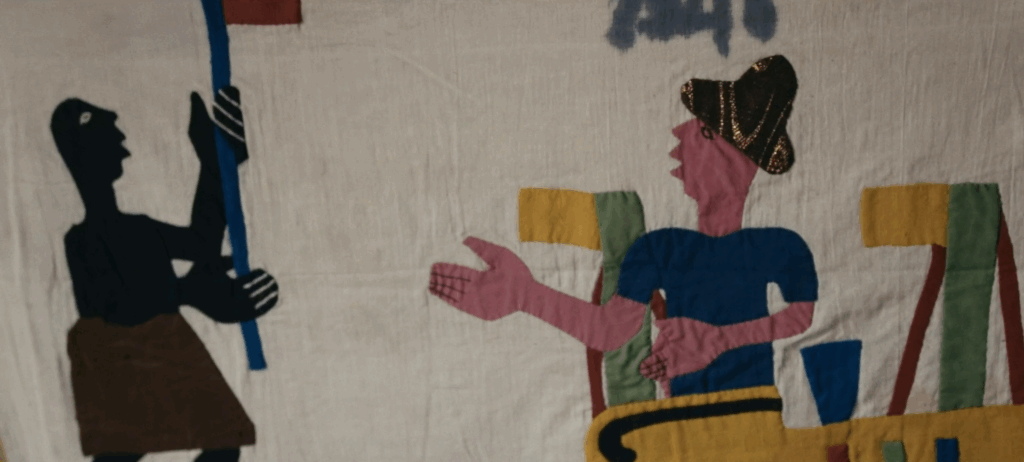In the sixteenth century, a man on the African coast of Kingdom of Whydah, land now known as Benin, saw a ship sailing in the distance. The man, whom oral history says was a hunter named Kpate, believed he had discovered the incarnation of a fire god. He tore off his loincloth, put it on a stick, and flagged the ship down until it approach the shore. But Kpate was wrong; the boat was not of a god, but of humans, pale-skinned and alien. They were Europeans, explorers from Portugal.
This incident is charged with cruelty and irony. Western perspective would typically frame this from the opposite perspective: a ship of European explorers finding a naked native on the shore, the act of discovery belonging to the so-called civilized colonizers rather than of the indigenous people. In fact, up until a few years ago, the historical account would probably use the word “savage” or something else dehumanizing to describe Kpate. But the darkness runs deeper than mere perspective of the story: in the subsequent centuries, members of the Kingdom of Whydah became one of the most exploited and abducted populations of Africa in the Atlantic slave trade, their basic dignity pillaged by those Europeans. Kpate’s “discovery” on the shore would ultimately leave an eternal scar on his people.

The Discoverer of the Discoverers, the provocative and impressionistic short documentary by British-Norwegian filmmaker C.S. Nicholson, encounters a group of people living in the shadow of this quasi-mythic story. The first present-day person we meet, Mitó Kpatènon Mijlèhounkpon Mènouéwa, claims to be a direct descendant of Kpate, and we see him reenacting the moment of discovery; we detect some conflict in the act. The documentary starts and finishes on the very beach the ancient story occurred: Nicholson ensures the viewer feels the draw and gravity of the location, the ever-rolling waves and distant horizon, in shaping the lives of the people of the historic city of Ouidah (derived from Whydah) where the film takes place.
Nicholson’s camera is less concerned with typical essay-style documentary and more in the swishing textures and images of this community. We see in them a contradiction, a people at once torn asunder by the poverty and socioeconomic scars of centuries of exploitation, but also resilient and deeply in touch with their heritage. The trickles of global capitalism intermingling with a traditional culture. A striking sequence shows a group eating a homemade meal around a table with a brass centerpiece composed against with a Coca Cola bottle, a nice summation of tension.

The short has an additional dramatic layer to it, too: The making of the documentary itself echoes the historical story. Nicholson, a white European man, arrives in Benin to encounter this community much like the Portugese did a half millennium ago. This time, the people are wary: Nicholson captures a drive down the road, and every person who passes the camera scowls skeptically at it. Although Nicholson does not narrate the film or appear in it, he is its subject, too; someone from the outside trying to reckon with a culture shaped, in part, by the cruelty of outsiders.
The Discoverer of the Discoverers is nominally a documentary, but it operates more in the syntax of an art film or even an experimental film: Nicholson is deliberate with his visual texture, employing a lot of slow-mo and inspection of unusual details and interlopers rather than the ostensible subjects of the short. The atmospheric score by Stian Kjelstad Granmo further enhances the meditative tone, accompanied with recitations in the African languages Fongbè and Xwédagbè by Mènouéwa’s father, Roger Kpatènon (subtitled in English, with several credited translators). The film’s 25 minutes are contemplative and experiential rather than linear and didactic, but they convey the broad strokes of the story and leave a lingering impression.

The film comes as part of a recent wave of well-regarded documentaries considering perspectives not historically provided a strong voice in media, many of which apply unconventional formal or stylistic touches. In particular, The Discoverer of the Discoverers evokes Mati Diop’s excellent 2024 documentary Dahomey about the repatriation of artifacts from France to Benin, not just because of the similar setting of Benin (Dahomey was a kingdom that once took over Whydah), but because of the way the documentary itself becomes part of the telling.
Nicholson’s team includes Peder Bratterud, credited as both cinematographer and editor, Anna Nilsson as sound design, and Jens Valberg as colorist. The production is extremely professional, presented with a clear and distinctive vision. The Discoverer of the Discoverers suggests that Nicholson has a bright path before him as an unconventional storyteller, especially in the growing world of art-documentaries.
The Discoverer of the Discoverers (25 min.) is streaming on Whush and on Vimeo on demand ($1.99). It is also currently streaming for free on Short of the Month.
The Discoverer of the Discoverers is directed and produced by C.S. Nicholson. You can read an interview about the production in Final Cut Magazine. Crew credits include Peder Bratterud as cinematographer and editor, Stian Kjelstad Granmo as composer, Anna Nilsson as sound design, and Jens Valberg as colorist.
Dan Stalcup is the film critic for The New Cinephile and The Goods. Reach him at dan.stalcup@gmail.com.
